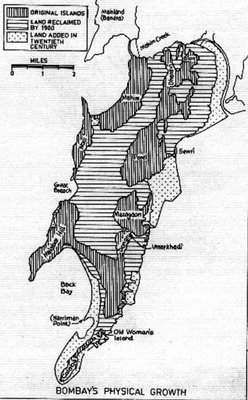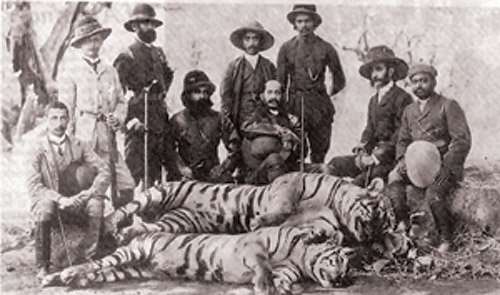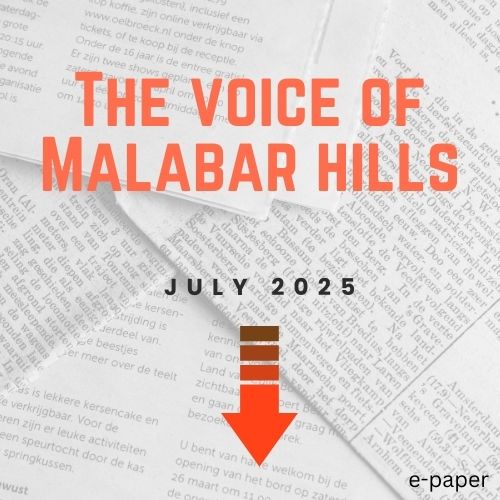23rd April 1662 witnessed in Lisbon the marriage by proxy ofCatherine of Braganza, daughter of King John IV of Portugal, to King Charles II of England. This much celebrated event changed the history of our islands. The seven islands along the western coast of India ‘were gifted as dowry to the Crown’.
The little islands, our Mumbai today, had come into existence because of a volcanic eruption millions of years earlier. They were home to the local fisher community, the ‘kolis’; to those who came as pilgrims and settled around the Banganga Tank; and the ‘pirates’ who guarded the trade routes between Arabia and the mainland of India. The Portuguese, who had come to India as traders, were termed as ‘pirates’ as well, because they intercepted trading ships of various other powers. Eventually, on 23rd December 1534, Sultan Bahadur of Gujerat signed the ‘Treaty of Bassein’ ceding the territories of Bassein (today’s Vasai), the seven islands and the seas around them to the Kingdom of Portugal. However, having gained control, the Portuguese had little use for them and the islands lived on as before, with the name of ‘BomBahai’ islands’.
Charles-II accepted the gift, but ‘did not want the trouble of ruling these dirty islands’ of forests, wild animals and swamps. He too had no use for them.
The East India Company, a joint-stock company formed by the Charter of Queen Elizabeth-I to pursue trade, only had control of Surat on the western coast. Their ‘factory’ (warehouse) manager was an officer with great vision. He came down to look at these islands and dreamt of a ‘the city, which by God’s assistance, is intended to be built’. Negotiations commenced and the Crown was persuaded to rent the islands in 1668 for just 10 pounds of gold per annum.1668 onwards destiny changed for the city of Governor Hornby’s dreams. The namechanged from ‘BomBahim’ to ‘Bombay’. Destiny of Malabar Hills, which are on the Western side of the largest & main island, also changed.
The Governors of the East India Company first lived in Bombay Castle and then moved to a Portuguese nunnery in Parel, which today houses the Haffkine Institute. However, the Englishmen loved ‘shikar’ and would come hunting to Malabar Hill on weekends, but their ‘feathers and hats’ were not enough protection against the heat of midday. Thus Governor Meddows built a small ‘Hunting Lodge’ in 1788, just a small room to escape the heat, on the rock jutting into the sea.


Archealogicallyboundaries of cities are measured by location of funerary sites. These were always outside human habitation. The main island witnessed construction of the Bombay Castle and Malabar Hills developed as forests outside city limits. Thus we have the ‘Shilahara’ burning ghatsand the saints ‘samadhis’at Banganga, and the ‘Towers of Silence’ for rites of the Parsis.
Parsis, a very small community that had immigrated from Persia and settled mostly in Gujerat, started trickling into the islands after it became English territory, and for practising their purposes of excarnation, the first ‘dokhma’ or small circular well was built in 1672 by ModiHirjibhaiVaccha-Gandhi, and the second by ManekjiSett in 1751. As the city grew and more Parsis migrated to this ‘new city of dreams’, the ParsiPanchayat bought a ‘wadi on the dongar’ or ‘plantaion on the Hill’ in 1779, from a local named Pandu Sett. This then became the large complex of “Doongerwadi’ with dockhmas and prayer halls.
Destiny had changed the name of the city, its people and its areas.
The ‘Kolis’ remained in small hamlets, the animals were killed, the forests were cut and Bombay grew.
The Hunting Lodge, became the sentinal’s post, and then Point Bungalow (today’s JalChintan in The Raj Bhavan Complex) when the Governor’s residence moved to Malabar Hill.
This move brought the maharajas and the rich to the Hills to be close to the seat of power.
Malabar Hills developed from 1820, through the 20th Century to what we see today.
Anita Garware , Chairperson, INDIAN HERITAGE SOCIETY MUMBAI, Resident of Malabar Hill





